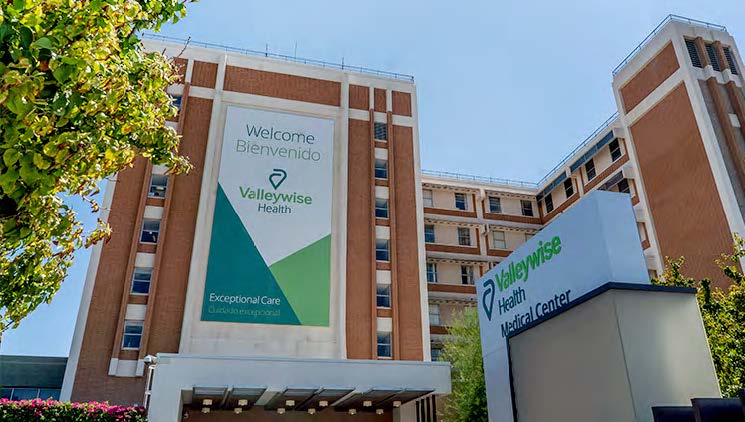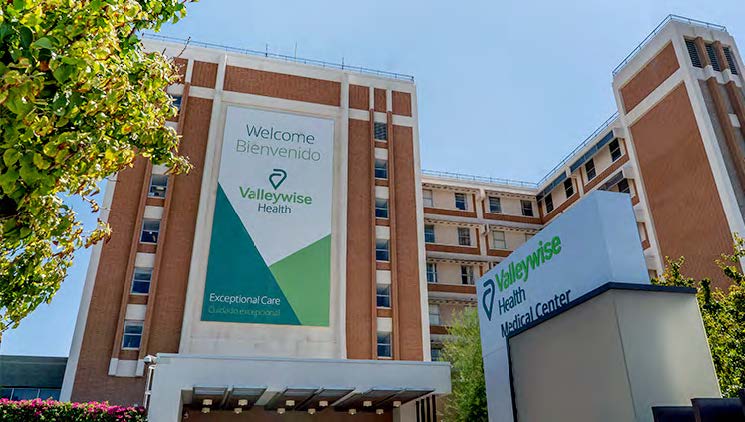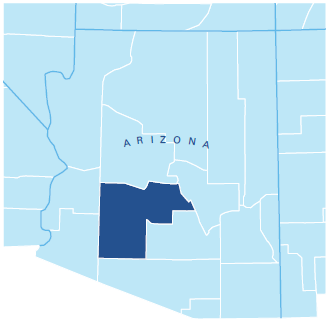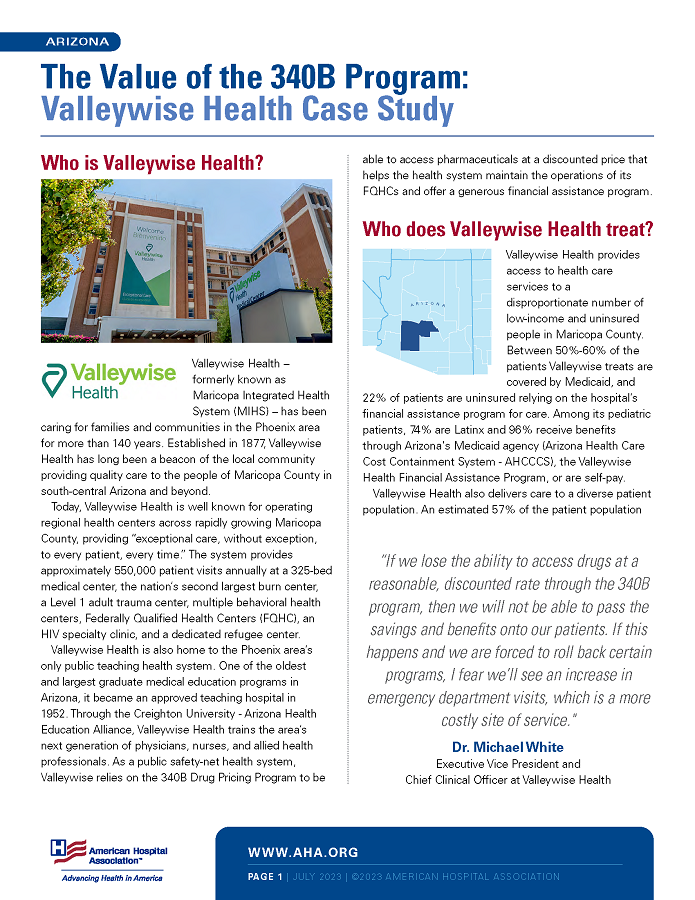

Valleywise Health | Arizona
The Value of the 340B Program Case Study
Who is Valleywise Health?

 Valleywise Health – formerly known as Maricopa Integrated Health System (MIHS) – has been caring for families and communities in the Phoenix area for more than 140 years. Established in 1877, Valleywise Health has long been a beacon of the local community providing quality care to the people of Maricopa County in south-central Arizona and beyond.
Valleywise Health – formerly known as Maricopa Integrated Health System (MIHS) – has been caring for families and communities in the Phoenix area for more than 140 years. Established in 1877, Valleywise Health has long been a beacon of the local community providing quality care to the people of Maricopa County in south-central Arizona and beyond.
Today, Valleywise Health is well known for operating regional health centers across rapidly growing Maricopa County, providing “exceptional care, without exception, to every patient, every time.” The system provides approximately 550,000 patient visits annually at a 325-bed medical center, the nation’s second largest burn center, a Level 1 adult trauma center, multiple behavioral health centers, Federally Qualified Health Centers (FQHC), an HIV specialty clinic, and a dedicated refugee center.
Valleywise Health is also home to the Phoenix area’s only public teaching health system. One of the oldest and largest graduate medical education programs in Arizona, it became an approved teaching hospital in 1952. Through the Creighton University - Arizona Health Education Alliance, Valleywise Health trains the area’s next generation of physicians, nurses, and allied health professionals. As a public safety-net health system, Valleywise relies on the 340B Drug Pricing Program to be able to access pharmaceuticals at a discounted price that helps the health system maintain the operations of its FQHCs and offer a generous financial assistance program.
Who does Valleywise Health treat?
 Valleywise Health provides access to health care services to a disproportionate number of low-income and uninsured people in Maricopa County. Between 50%-60% of the patients Valleywise treats are covered by Medicaid, and 22% of patients are uninsured relying on the hospital’s financial assistance program for care. Among its pediatric patients, 74% are Latinx and 96% receive benefits through Arizona's Medicaid agency (Arizona Health Care Cost Containment System - AHCCCS), the Valleywise Health Financial Assistance Program, or are self-pay.
Valleywise Health provides access to health care services to a disproportionate number of low-income and uninsured people in Maricopa County. Between 50%-60% of the patients Valleywise treats are covered by Medicaid, and 22% of patients are uninsured relying on the hospital’s financial assistance program for care. Among its pediatric patients, 74% are Latinx and 96% receive benefits through Arizona's Medicaid agency (Arizona Health Care Cost Containment System - AHCCCS), the Valleywise Health Financial Assistance Program, or are self-pay.
Valleywise Health also delivers care to a diverse patient population. An estimated 57% of the patient population in ambulatory care settings are Latinx and nearly 10% are Black. More than 30% of patients are non-English speaking. With a significant immigrant and refugee population in the Phoenix area, our diverse team speaks over 100 languages and provides culturally competent care to all.
“If we lose the ability to access drugs at a reasonable, discounted rate through the 340B program, then we will not be able to pass the savings and benefits onto our patients. If this happens and we are forced to roll back certain programs, I fear we’ll see an increase in emergency department visits, which is a more costly site of service.”
Dr. Michael White
Executive Vice President and
Chief Clinical Officer at Valleywise Health
What’s the value of the 340B Program for Valleywise Health and its patients?
The 340B program has been instrumental in enabling Valleywise to maintain top-of-the-line care and provide access to innovative health care programs for all—regardless of ability to pay:
340B Savings Support Compassionate Care and Innovative Programs
The savings that Valleywise is fortunate to achieve through the 340B program is completely reinvested back into programs that directly benefit patients and the larger community. As part of Valleywise’s comprehensive array of high-quality primary, specialty, and acute care services, the health system uses 340B savings to support the long-term health and wellness of the community through innovative programs. For example, recognizing that diabetes is the leading cause of kidney disease, proactively helping people in the community have the tools they need to avoid diabetes and other chronic conditions is vital. That is why Valleywise partnered with Arizona Women’s Board and St. Mary’s Food Bank to launch their Food Pharmacy Program at Valleywise Community Health Center in 2020, a program that has proven to be an invaluable resource to residents of one of the most economically disadvantaged areas in Phoenix. Since Valleywise believes all people deserve access to health care, it also applies savings to its financial assistance program, which provides more than $44 million in uncompensated care to patients each year.
340B Savings Helps Valleywise Lower Drug Costs for Patients
Valleywise maintains its own pharmacies, including HIV-specialty pharmacies, within all of its clinics to help patients access affordable medications. Savings from the 340B program help the health system maintain a network of contract pharmacies so Valleywise patients access their needed medications closer to where they live improving adherence to their prescribed treatments.
340B Hospitals Need Support
The 340B Drug Pricing Program enables Valleywise to continue providing care to all patients regardless of insurance status or ability to pay. The health system passes along the program savings to patients in the form of financial assistance and innovative programs that advance health in Arizona. Without participation in the 340B program, Valleywise would be forced to make tough decisions about what programs and staff it may need to cut in order to remain financially stable—a worst-case scenario. Ultimately, if these programs were eliminated, the result would be an increase in emergency department and acute care visits and readmissions, signaling worsening patient health and higher health care costs overall.
More than 30 years after it was enacted, the 340B Drug Pricing Program continues to allow hospitals like Valleywise to reinvest in compassionate, high-quality patient care by being good stewards of federal resources. Now, the federal government must maintain its commitment to the 340B Drug Pricing Program so that health systems like Valleywise Health can continue to address the health care needs of the patients and communities they serve.


